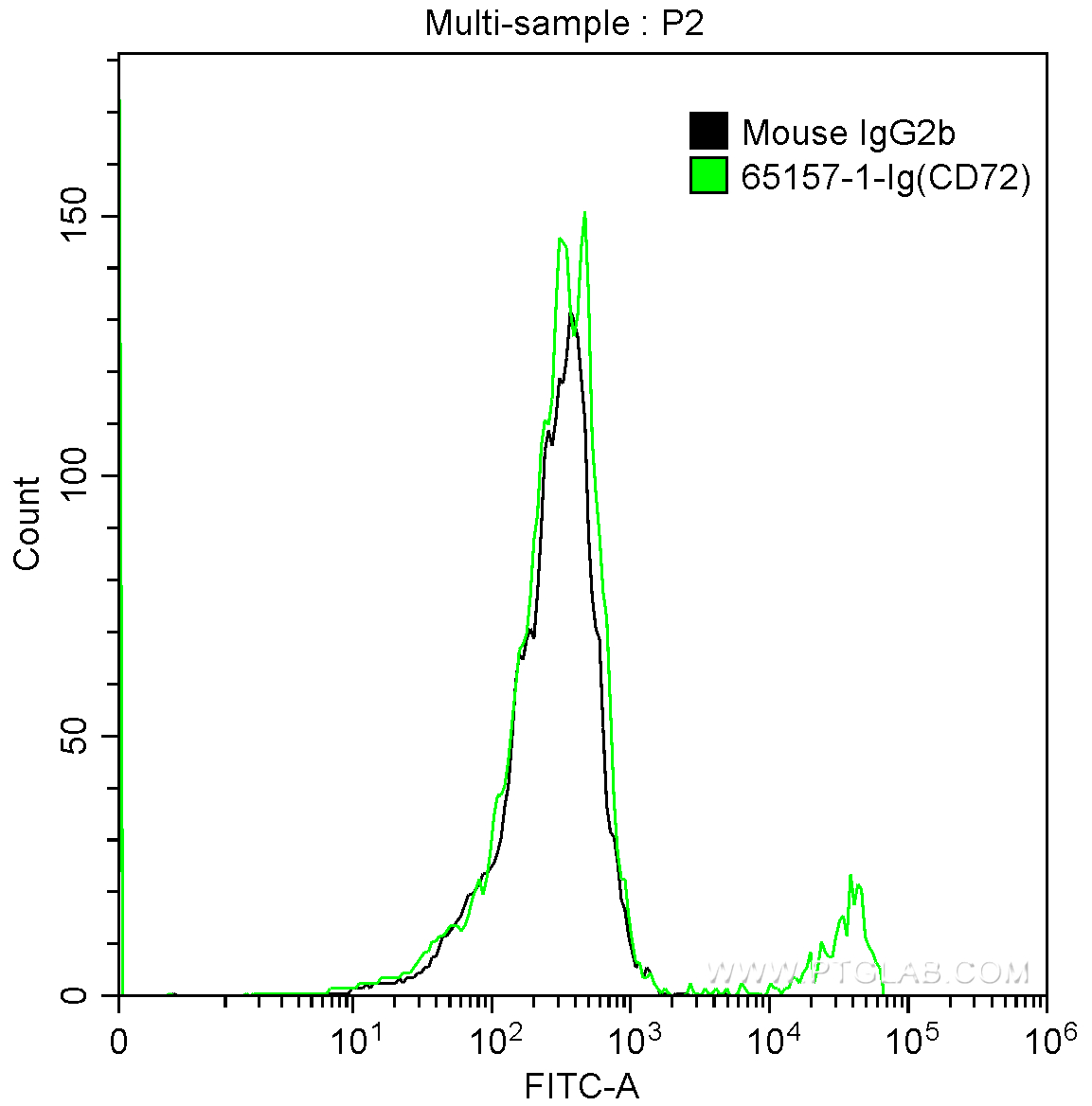验证数据展示
经过测试的应用
| Positive FC detected in | human peripheral blood lymphocytes |
推荐稀释比
| 应用 | 推荐稀释比 |
|---|---|
| Flow Cytometry (FC) | FC : 0.5 ug per 10^6 cells in 100 μl suspension |
| This reagent has been tested for flow cytometric analysis. It is recommended that this reagent should be titrated in each testing system to obtain optimal results. | |
| Sample-dependent, Check data in validation data gallery. | |
产品信息
65157-1-Ig targets CD72 in FC applications and shows reactivity with Human samples.
| 经测试应用 | FC Application Description |
| 经测试反应性 | Human |
| 免疫原 |
Normal human lymphocytes from a lymph node 种属同源性预测 |
| 宿主/亚型 | Mouse / IgG2b, kappa |
| 抗体类别 | Monoclonal |
| 产品类型 | Antibody |
| 全称 | CD72 molecule |
| 别名 | CD72, CD72 molecule, CD72b, Lyb 2, LYB2 |
| GenBank蛋白编号 | BC011734 |
| 基因名称 | CD72 |
| Gene ID (NCBI) | 971 |
| RRID | AB_2918439 |
| 偶联类型 | Unconjugated |
| 形式 | Liquid |
| 纯化方式 | Purified by precipitation and chromatography |
| UNIPROT ID | P21854 |
| 储存缓冲液 | PBS with 0.09% sodium azide, pH 7.3. |
| 储存条件 | Store at 2-8°C. Stable for one year after shipment. |
背景介绍
CD72 is a type II transmembrane glycoprotein of 39-45 kDa and is expressed as a disulphide-linked homodimer (PMID: 1711157). CD72 is a pan B-cell marker covering the full range of differentiation from the very early stages of B cells to mature surface Ig+ B cells (PMID: 1384316). It is expressed in all stages of B cell development except plasma cells. CD72 is also expressed by dendritic cells, tissue macrophages in the red pulp of the spleen and von Kupffer cells in the liver (PMID: 8561576; 1384316). CD72 is the ligand for CD5 (PMID: 1711157). CD72 is a negative regulator of BCR signaling (PMID: 9590210). Interaction of CD100 with CD72 strictly tunes the strength of BCR signals and is essential for maintaining immunological homeostasis as well as generating a proper immune response (PMID: 16113236).
实验方案
| Product Specific Protocols | |
|---|---|
| FC protocol for CD72 antibody 65157-1-Ig | Download protocol |
| Standard Protocols | |
|---|---|
| Click here to view our Standard Protocols |


